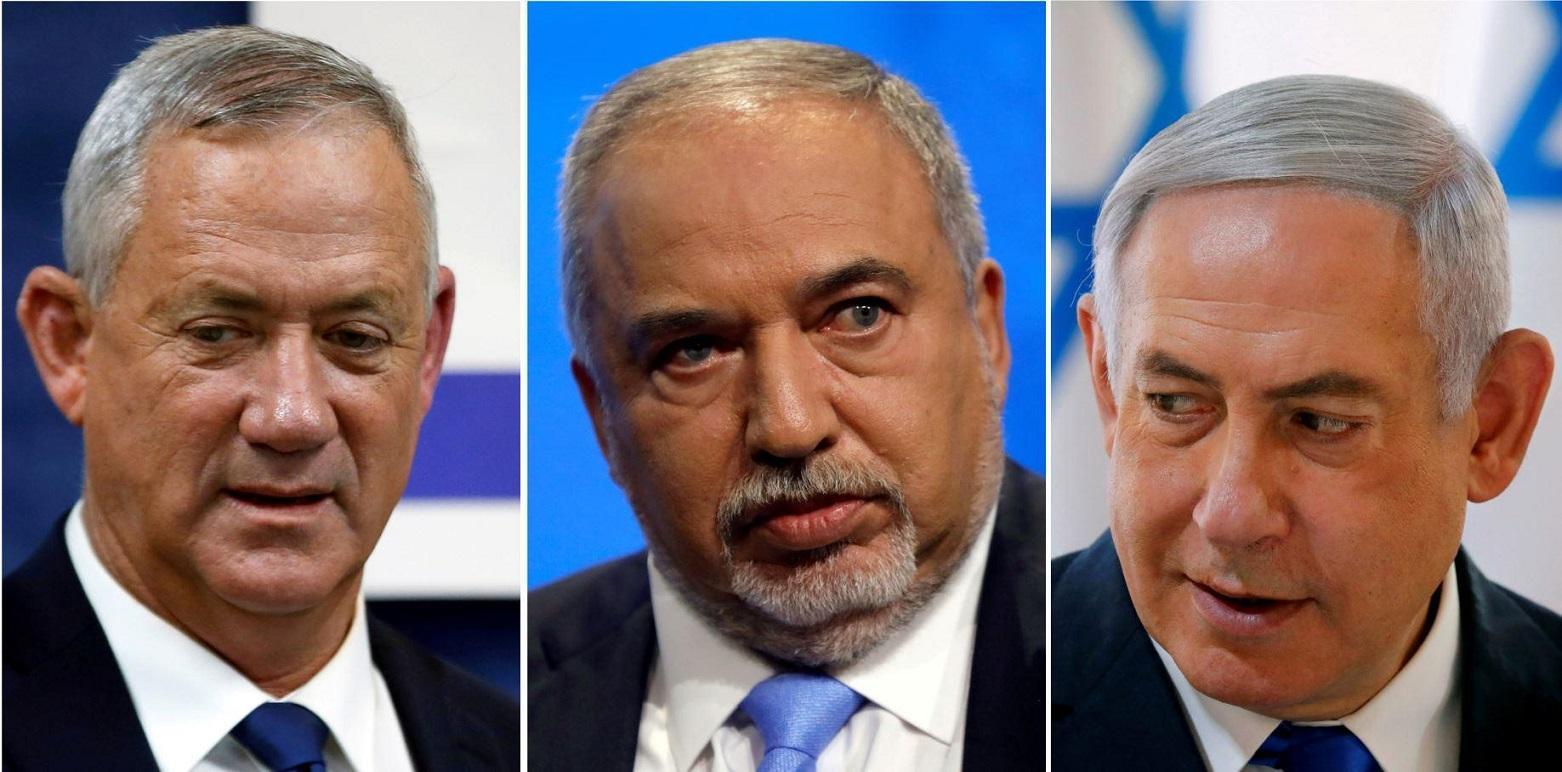The 22nd Knesset-to-come: a new political configuration in Israel
Israel just survived its second election round in five months, with no clear government formation coming out of the ballots. Both the Kahol-Lavan (Blue&White) party of Benny Gantz and the Likud party of incumbent Prime Minister Benjamin Netanyahu are projected to arrive neck-to-neck with 33 and 31 seats respectively. As the Israeli system is purely proportional, the real decision-makers will be once again the medium-size parties – in particular, the eight seats of Avigdor Lieberman’s Yisrael Beitenu (Israel Our Home) party. These will determine which leader could aspire to rein in enough junior partners to build a 61-seat coalition. However, this time President Reuven Rivlin is expected to give the mandate to form a new government to the Blue&White party first, both for reasons of political opportunity (Netanyahu already failed once) and because it has not been bestowed on it yet.

The just settled electoral campaign did not revolve around any major ideological issue, or tackling economic policies, or even addressing strategic security challenges such as those posed by Iran, Hezbollah or the soon-to-be-disclosed US “Deal of the Century”. And it certainly did not hint at the renewal of an Israeli-Palestinian peace process. The only major theme raised by all the contenders was the opportunity to unseat Prime Minister Netanyahu, ending 13 years of his leadership. The relationship between state and religion, however, had a more polarizing effect compared to the previous election round (April 9, 2019), which awarded more seats to the party arguing in favor of secularization (Yisrael Beitenu, passing from four to eight seats). Overall, the parliamentary strength of the right-wing bloc decreased from 60 to 55 seats, while that of the centrist bloc marginally increased from 55 to 57 seats, making it an uphill road for Netanyahu to make it to the government.
There is no denying that Netanyahu’s political legacy deserved some merit and is at least mixed: Israel enjoys a positive reputation in many parts of the world, at least in the economic field, and direct and close relations with two superpowers simultaneously – the US and Russia, which are at odds with each other on several strategic issues. In addition, it keeps secret diplomatic ties with Arab states such as the United Arab Emirates, Saudi Arabia, Bahrein and Qatar, which was unthinkable until a few years ago. Unquestionably, Netanyahu succeeded in keeping Israel mostly out of the Syrian quagmire, while carrying out targeted military actions against Iranian and Hezbollah objectives as far as in Iraq (as proven by the recent aerial strike on Iran’s Al-Bukamal base in Eastern Syria near the Iraqi border). He secured a stable economy and two long-term gains from Washington: the legitimacy for Israeli sovereignty over the Golan Heights and the transfer of the US Embassy to Jerusalem. Finally, he negotiated a truce with Hamas in Gaza and even brokered an agreement with Qatar to finance the Hamas-ruled failing institutions of the Strip in order to keep them afloat. Overall, he gave the Jewish state the feeling that it can both confidently dwell alone and rely on friendly relations with the mightiest nations of the world.
There are many accomplishments that would be ascribed to his political legacy, but the shortcomings of his vision are equally numerous. The creeping annexation of West Bank settlements has been pushed to a point of no return, impairing the strategic choice for Israelis of territorially separating from the Palestinians; the crisis in Gaza has been temporarily managed but not solved, with the Israeli public opinion still voicing much concern about the periodic missile attacks targeting the southern cities bordering the Strip; but more than ever, the bombastic electoral promise to annex the Jordan Valley could endanger the positive steps towards normalization reached so far with the Sunni Arab states, even jeopardizing long-term good neighboring relations with Jordan and Egypt.
The annexation of the Jordan Valley could potentially open a Pandora’s box of incredible scale: Dividing East Jerusalem from its Palestinian hinterland could trigger the collapse of the Palestinian National Authority from outside (political contestation) or from beneath (refusal of Palestinian security forces to further collaborate with Israel), while instigating a major political crisis and a thorny soul-searching in neighboring Jordan, whose population of 10 million includes almost two million Palestinians, plus many more citizens of Palestinian descent. In turn, with the two-state solution ruled out, it would no longer been possible for representatives of Saudi Arabia, the UAE and Egypt to sit with Israeli officials around the same diplomatic table. This is not to mention that the annexation would benefit 11,000 settlers out of a total population of some 413,400 (CBS, 2017).
The boosted electoral turnout of the current election was a trump card: The Arab-Israelis who massively deserted the ballot boxes in April due to the disintegration of the Arab Joint List (with a 49.7% turnout only), did not miss the opportunity this time to vote in an election viewed by their leaders as critical in the definition of Israel as a democratic state and, thus, secured 13 seats for their party.
The two leaders of the secular parties supporting the re-merged Joint List – Ayman Odeh of Hadash and Ahmad Tibi of Ta’al – cautiously voiced their support for Benny Gantz, opening up to the possibility of backing a centrist government from the outside, potentially contributing to reach the much-coveted 61-seat majority.

Historically, Arab parties – which stand for 20% of the population, that is 1,890,000 Arab citizens in Israel – contributed twice to the victory of Left-leaning coalitions: Once under the second Rabin government in 1994 and then with the election of Ehud Barak in 1999. This time, both Odeh and Tibi, strengthened by the support of surveys pointing to a 76% majority of Arab citizens willing to turn a new page in Arab-Israeli politics (Statnet Research Institute Survey as for 27 August 2019), declared to be willing to curb a fifth forthcoming Netanyahu-led extreme right-wing government by any means and to be ready to partner with any prospective alternative force to this end. The latter came in exchange for the subscription of a least common denominator, that is a government commitment to step up the budget for local Arab municipalities and a general pledge to the principles of “two states for two peoples”. Gantz’s reply was not long in coming, pushing forward the possibility to appoint an Arab minister if elected, despite having ruled out the inclusion of non-Zionist parties in a Blue&White future government.
However, it does not matter how strong the Joint List is, if Lieberman is vetoing any alliance with the Arabs. Indeed, the kingmaker role is going to be that of the two medium-size, right-wing parties of Yamina and Yisrael Beitenu. Notwithstanding their common right-wing inclination, the two parties are located at the extremes of the political spectrum in terms of coalition-building opportunities, with Lieberman likely to be the tiebreaker.
The tight ballot results do not allow Blue&White much leeway in building an alternative coalition, with both blocs totaling 56 seats. A new majority could only emerge out of two main scenarios: Gantz first choice would be a broad popular national unity government with a Likud cleansed of Netanyahu or, second, a patchy coalition of junior partners. The first option is unlikely given the difficulty of the Likud chairman to oust Netanyahu on the basis of such a minor electoral defeat, thus it is more likely that Gantz would be obliged to fall back on his second option, carrying out consultations with all parties to check whether any other alternative excluding the Likud could hold. In this second case, two majorities are equally possible, though both fragile: Gantz would rather turn to Lieberman, the Democratic Union, Labour and the external support of the Arab Joint List. The real test would be winning over Lieberman’s staunch rejection to sit with the Arabs by enticing him with a key portfolio position and a shared pro-secular and moderately-nationalist platform. Otherwise, he could try to bring on board a motley assortment of parties including Yamina, the Religious Parties (UTJ and Shas) and the Left (Democratic Union and Labour), including all but the controversial Lieberman, vocally against the presence of the ultra-Orthodox. In the latter case, he could still portray this government as broad and comprehensive of all minorities (except the Arabs), claiming to have fulfilled his mission.
What would a Blue&White-led government be like? By overthrowing Netanyahu it would have already achieved its main goal, building a government agenda revolving around the need to combat political corruption. Predictably, such a government would repeal the Jordan Valley annexation promise, while ensuring that the Supreme Court would still enjoy its full judicial rights, shelving the so-called “Overriding clause” pushed forward by the United Right (which would, either way, turn into a junior coalition partner).
It could even possibly advance the socio-economic rights of the Arabs of Israel, or at least of those who, in Lieberman’s perspective, do not pose a threat to national security. It would not be more submissive to Hamas and would not back off from supporting the settlements west of the Separation Barrier, but at least it would not embark on new major construction enterprises out of messianic ambitions and it would not alienate the Arab Sunni States. It could even, eventually, consent to a US-led attempt to reach out to the Palestinians, though strictly on Israeli terms.
